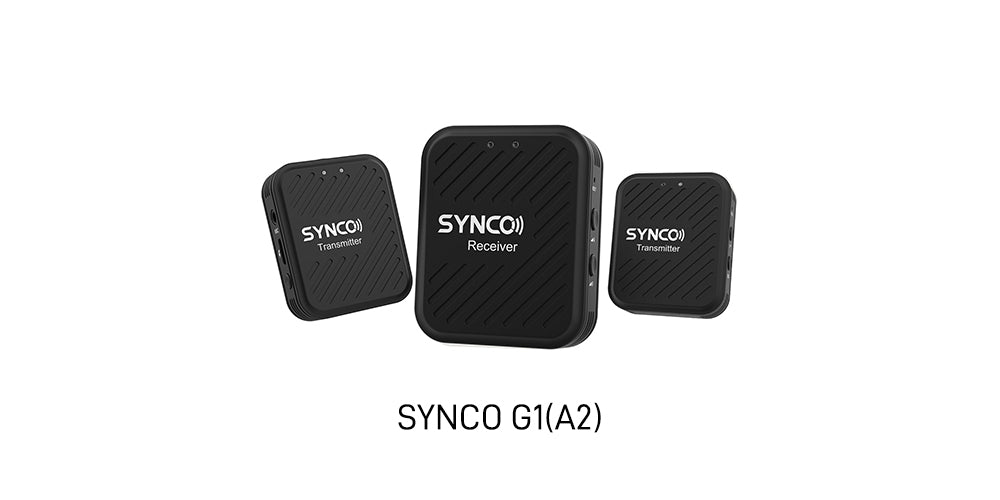There are many different polar patterns of mics for sale on the market nowdays, are you aware of their features and differences? This article will introduce the omnidirectional microphone, which is one of the common and useful type, and see what creative changes it can bring to your recording!
- Omni mic overview: definition, features, applications
- Omnidirectional vs unidirectional: What's the difference?
- What benefits does the external omnidirectional microphone have?
- Which type is the best one for recording?

Omni mic overview: definition, features, applications
Let’s have a quick overview of it and get to know it from three basic aspects, including what is it, how it works, and why may you need one for your recording activities.
1. What is omnidirectional microphone?
This type of mic captures the sound equally well from all angles or directions. It records the signal with the same power regardless of whether you are behind, in front, or to one side of the microphone.
2. How does it work?
It records sound with equal strength from all directions, which directly means 0° to 360°. Thus, its polar plot image is displayed as circular. The circular design is seen. Therefore, the gain of sound will be the same regardless of how the user talks into the mic.
3. What are omnidirectional microphones used for?
It will catch the signals with the same strength whether the speakers talking into it from the front, rear, left, or right side. In contrast, unidirectional microphones only pick up sound from one specific side with exceptional sensitivity. The sound may emanate from anywhere in a hectic conference setting. When inspiration hits, your team may require a microphone that can record ideas from everyone in the space.
Omnidirectional vs unidirectional: What's the difference?
“Omni” comes from Latin and means "all", while “Uni” means “one”. The latter silences unwanted noise. A unidirectional mic will enable you to record a single person's voice if it is the only thing you are recording. You wouldn't be able to hear someone speaking on the other side of the room, though, unless you moved the microphone. Because a wireless omnidirectional microphone will pick up sound from all directions, channel separation may be less accurate with it than with a directional one. As a result, if channel separation is favored, Omni's direct-to-indirect sound ratio may become worse.
Microphone omnidirectional vs unidirectional, which one is better, this is undoubtedly a constant topic. Both two have unique qualities that work better in particular circumstances, but neither one is perfect than the other. Omnidirectional mics feature a circular pick-up pattern that records 360 degrees of sounds, in contrast to directional ones. The pick-up pattern sometimes referred to as a polar pattern or polar plot, is essential to the operation of any mic. Anywhere in the vicinity of an omnidirectional mic, a person will be audibly heard with equal gain.
What benefits does the external omnidirectional microphone have?

1. Flexible capture
Compared to the directional type, like the microphone for recording music, it could provide a more adaptable technique to record sound. This works well in conference situations when a group of people must congregate around a single microphone, such as in an open workplace or huddle room, or where there are many participants and it is not possible to provide directional microphones for each.
2. It transfers an authentic voice
The degree of distortion should be taken into account when deciding between directional and omnidirectional kinds. When working with high SPLs in near miking circumstances, directional micS tend to distort more than omnidirectional microphones, which is especially essential. Directional and omnidirectional ones exhibit different levels of distortion when you do a comparison between some specific products. Use a directional microphone only if necessary, and make sure it has high headroom before clipping and low distortion.
3. It features a lower frequency response generally
In general, omnidirectional condenser microphone responds to low frequencies more slowly than directional kinds at distances more than 30 cm. This is frequently referred to as a "fuller or warmer response in the bass" in hearing tests. Once more, the directional microphone needs equalization to make up for the bass loss.
Which type is the best one for recording?
The best omnidirectional microphone for podcasts, live streaming, and video recording, should meet your needs in terms of types and practical applications. The following will be briefly divided into three categories for a brief introduction. You can search for an in-depth buying guide at the Momanx blog for further reading.
- Lavalier: Whether wired or wireless, the advantage of this one is its mini body brings portability and flexible movement when using. You can use the clip to fix it on your collar, when you record a video, the audience will not focus too much attention on this small thing, but more on your video content. For example, the omnidirectional lavalier microphone SYNCO G1(A2) with a dual channel system is ideal for vlogging, video chatting with friends, and also podcasting, and interviews.

- Shotgun: This one is installed on the phone or camera, when recording, you can adjust the radio mic facing speakers, in pursuit of more pursuit of sound capture. But if you have a distance from the camera, it will inevitably receive the noise you do not want to hear. It is a good choice when you can ensure the quietness of your surroundings. The recorded sound will seem natural, rich, and crisp when you buy yourself a professional one.
- USB: It can pick up sound in a 360-degree format and includes audio echo canceling technology to assist reduce background noise. Many gaming live streamers, voice-chatting influencers, and Vocal Youtubers are using USB omnidirectional microphone with sound shield, building a small home studio in their room.






